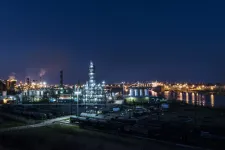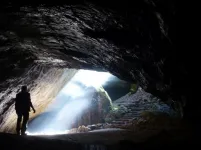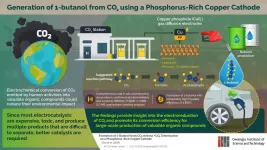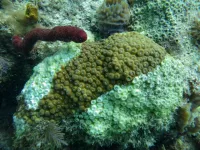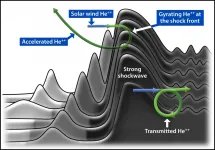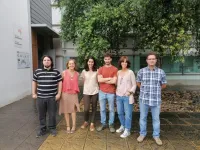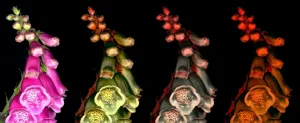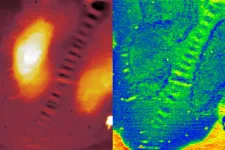(Press-News.org) The stage is set for a new carbon storage economy to emerge along the Gulf Coast, according to a study led by The University of Texas at Austin, with the region offering ample opportunities to capture and store carbon, and recent state and federal incentives giving an added push to get started.
Carbon capture and storage, or CCS, is a technology that keeps CO2 out of the atmosphere by capturing emissions and storing them deep underground. It can help fight climate change by lowering industrial emissions now while renewable energy sources are being developed, said Tip Meckel, a senior research scientist at the Gulf Coast Carbon Center, a research group at the UT Bureau of Economic Geology that has been studying CCS for the past 20 years.
"This is a viable way to reduce emissions in the near term," Meckel said. "It's feasible and has a reasonable economic structure that can support, retain and create jobs."
The study, which was published in Greenhouse Gases: Science and Technology, provides a high-level overview of policy incentives for CCS and how Texas and Louisiana's high concentration of industry and unique offshore geology make the region a particularly good spot to build up a carbon storage economy.
The topics explored in the paper are especially relevant considering recent moves that Texas has made to bring carbon storage under a similar regulatory framework as oil and gas. In June, Gov. Greg Abbott signed into law HB 1284, granting the Texas Railroad Commission the same regulatory authority over CO2 injection wells as it has over oil and gas wells. In May, the Texas General Land Office announced that it was accepting lease proposals for CO2 storage sites in state land offshore of Jefferson County. Any royalties or revenues related to storage will benefit the Texas Permanent School Fund, as oil and gas activity does.
In the past, oil and gas companies primarily used carbon storage and capture for enhanced oil recovery, which allows companies to get more oil out of depleted reservoirs by pumping in CO2. Enhanced oil recovery has been in use for decades and has produced an existing network of pipelines for transporting CO2 along the Gulf Coast. In addition, the two existing carbon capture facilities in Texas were built with these measures in mind.
However, the study shows that falling oil and gas prices and an increasing 45Q federal tax credit, which offsets tax liability for industries to different degrees depending on how the CO2 is stored, is making carbon storage for its own sake more attractive.
"Before, we only had one way: enhanced oil recovery" said former Assistant Secretary of Energy Charles McConnell, who is now the executive director of carbon management at the University of Houston and was not part of the study. "We are in a different place now. Storage in and of itself can be viable now."
The paper describes how the existing CO2 infrastructure could be leveraged and expanded to boost carbon storage outside of enhanced oil recovery -- with the researchers highlighting the subsurface geology offshore of the Gulf Coast as a suitable spot for permanently storing CO2.
The researchers also note that in Texas, state-owned lands extend to 10.35 miles offshore instead of the usual 3.45 miles due to a law that went into effect when Texas was a sovereign nation. The historical act ends up simplifying issues of ownership and permitting today.
While geology and infrastructure of the Gulf Coast is a winning combination for boosting a carbon storage economy, the study said that another important fact is simply the amount of CO2 produced in the region. Texas has the highest level of emissions of any state. Louisiana is second.
Capture and storage offers a way to stop a portion of those emissions right at the source, Meckel said. By doing that, the technology can help flatten CO2 emissions as lower-carbon energy alternatives mature in the market.
"Advancing carbon capture and storage is something that we can do now," Meckel said. "To take a big bite out of [the carbon] profile, you have to get going now."
INFORMATION:
The Department of Energy funded the research. The paper's co-authors are all part of the Gulf Coast Carbon Center. They are research scientist associate Alex Bump, principal investigator Susan Hovorka, and program manager Ramón H. Treviño.
The Bureau of Economic Geology is a research unit of the UT Jackson School of Geosciences.
Since the discovery of the first fossil remains in the 19th century, the image of the Neanderthal has been one of a primitive hominin. People have known for a long time that Neanderthals were able to effectively fashion tools and weapons. But could they also make ornaments, jewellery or even art? A research team led by the University of Göttingen and the Lower Saxony State Office for Heritage has analysed a new find from the Unicorn Cave (Einhornhöhle) in the Harz Mountains. The researchers conclude that, in fact, Neanderthals, genetically the closest relative to modern humans, had remarkable cognitive abilities. The results of the study were published in Nature Ecology and Evolution.
Working with the Unicornu Fossile society, the scientists ...
Human activities like the burning of coal and fossil fuels have caused CO2 to accumulate in the atmosphere, which has significantly affected the Earth's climate. As a result, several scientists are looking for ways to convert CO2 into other valuable organic products, such as 1-butanol, which has shown promise as an alternative fuel for vehicles. This could help reduce our dependence on fossil fuels.
One method of obtaining useful compounds is by the electrochemical reduction reaction (CO2RR). Researchers have developed metal-based catalysts that can fulfill this task. However, there is a caveat: most of these catalysts are expensive and produce a variety of products during the reaction, ...
MIAMI--A new study led by scientists at the University of Miami (UM) Rosenstiel School of Marine and Atmospheric Science is the first to document what coral genes are doing in response to a disease that is rapidly killing corals throughout Florida and the Caribbean. The findings can help to better understand coral immune system as new diseases emerge as the ocean warm.
The collaborative effort between researchers at the UM Rosenstiel School, Mote Marine Laboratory and the Smithsonian Marine Station is the first to document a gene expression response of corals to stony coral tissue loss disease and that the disease causes a shared immune response in at least two coral species -- mountainous star coral (O. faveolata) and great star coral ...
Metal-organic frameworks (MOF) are crystalline porous organic-inorganic hybrid materials that, by filling its pores with guest molecules, can create functionalities through interactions between the organic-inorganic based frameworks of MOF (host) and its guest molecules. This host-guest chemistry has the potential to bring "designable" electrical properties, allowing for a material to be organized in ways never before possible - paving the way for the next-generation of thin-film smart devices.
"However, most MOFs exhibit poor electrical conductivity", states Professor Masahide Takahashi, ...
Philadelphia and Santiago -A new study published in The Lancet Global Health showed that establishing safe nurse staffing standards in hospitals in Chile could save lives, prevent readmissions, shorten hospital stays, and reduce costs.
The study, by the Center for Health Outcomes and Policy Research (CHOPR) at the University of Pennsylvania School of Nursing, and the Universidad de los Andes - Chile School of Nursing, found very large variations in patient to nurse staffing across 40 hospitals located throughout Chile. Nurse staffing was significantly ...
SAN ANTONIO -- July 6, 2021 -- Scientists have used data from the Southwest Research Institute-led Magnetospheric Multiscale (MMS) mission to explain the presence of energetic heavy elements in galactic cosmic rays (GCRs). GCRs are composed of fast-moving energetic particles, mostly hydrogen ions called protons, the lightest and most abundant elements in the universe. Scientists have long debated how trace amounts of heavy ions in GCRs are accelerated.
The supernova explosion of a dying star creates massive shockwaves that propagate through the surrounding space, accelerating ions in their path to very high energies, creating ...
A research group at the University of Cordoba has conducted study focused on evaluating the potential of the Sentinel-2 sensor system's configuration to predict the amount of forage on permanent Mediterranean grasslands.
Pasture quality assessment in permanent grasslands is essential for their conservation and management, as it can facilitate real-time decision-making regarding livestock management. In this regard, the Sentinel-2 satellite constellation, launched in 2015, has proven to be a promising tool for permanent grassland monitoring. This is a sensor system developed by the European Space Agency (ESA) and that provides free and available data worldwide, with a review time of five days, and 13 spectral bands. The spectral configuration of Sentinel-2, ...
Scientists from the European Molecular Biology Laboratory (EMBL) and the German Cancer Research Center (DKFZ) have presented a new method for generating metabolic profiles of individual cells. The method, which combines fluorescence microscopy and a specific form of mass spectroscopy, can analyze over a hundred metabolites and lipids from more than a thousand individual cells per hour. Researchers expect the method to better answer a variety of biomedical questions in the future.
Today, many biomedical disciplines focus their attention on the metabolites of individual cells. While in the past these were considered simply as degradation products or else building blocks for the synthesis of complex cellular molecules, ...
Changes in the colour and intensity of light pollution over the past few decades result in complex and unpredictable effects on animal vision, new research shows.
Insect attraction to light is a well-known phenomenon, but artificial lighting can also have more subtle consequences for species that rely on night-time vision for their behaviour.
To explore these effects, University of Exeter researchers examined the impact of more than 20 kinds of lighting on the vision of moths, and birds that eat them.
The study found that elephant hawkmoth vision was enhanced by some types of lighting and disrupted by others, while the vision of birds ...
While atomic force microscopy and scanning electron microscopy have already provided information on the morphology of bitumen surfaces in the past, for a long time it was not known whether surface and chemical composition correlate with each other. However, the chemical composition of the surface is of particular interest because oxidation processes take place there, triggered by oxygen-containing molecules in the air such as ozone, nitrogen oxides or hydroxyl radicals. The oxidation process accelerates the aging of the material - the bitumen becomes porous and damage develops.
The materials ...
